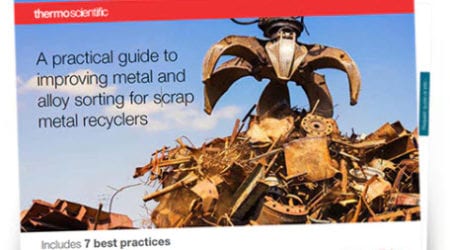 Laser Induced Breakdown Spectroscopy (LIBS) is the analytical technique using a high-focused laser to determine the chemical composition of materials. LIBS has been around for many years and is a technique used primarily in laboratory equipment. With recent advances in technology, the technique has now been developed into a portable handheld analyzer capable of measuring elements, including carbon, in the field for material identification.
Laser Induced Breakdown Spectroscopy (LIBS) is the analytical technique using a high-focused laser to determine the chemical composition of materials. LIBS has been around for many years and is a technique used primarily in laboratory equipment. With recent advances in technology, the technique has now been developed into a portable handheld analyzer capable of measuring elements, including carbon, in the field for material identification.
LIBS is an important technology used in the oil and gas industry for positive material identification (PMI) of piping, pressure vessels, valves, pumps, and finished welds, or to grade unknown materials to regain traceability. Changing the amount of carbon in these products can change the properties of the steel including tensile strength, hardness, weldability, ductility, and corrosion resistance.
Fatal accidents and injuries, as well as leaks, premature pipe replacements, loss of property, and unplanned outages at refineries, chemical plants and gas processing facilities often can be traced back to equipment failures due to faulty or counterfeit metal building components or because piping is made from material that does not meet specifications.
LIBS analysis is vital to calculating carbon equivalency prior to welding to determine heat affected zone hardenability (HAZ).
The LIBS analysis process
The LIBS technique utilizes a high-focused laser that interacts with the surface of a material and forms a plasma in which the material is broken down into single elements. A laser pulse is produced by the analyzer and pointed at the sample surface. The surface is ablated and enters the plasma.
The plasma atomizes the samples, and the excited atoms emit light as they return to ground state. The emitted light is transferred through fiber optics and enters the spectrometer through a slit. The light interacts with a diffraction grating where it is split into single wavelengths/ colors. The single wavelengths/ colors hit the detector and produce spectral data.
The central processing unit (CPU) analyzes the spectral data and determines the concentration of each element present in the sample. Composition data and identified alloy grade are displayed and stored via memory for later recall or download to an external PC.
If you would like to know more about LIBS, we have outlined the process and explained the science behind this technology in our easy-to-understand eBook: LIBS technology for non-scientists. This free eBook also explains the components that make up a handheld LIBS analyzer and offers 10 features to look for when purchasing one.
- Download the ebook: LIBS technology for non-scientists
Additional Resources:
- Download our free eBook: A Practical Guide to Improving Steel Manufacturing Processes and Production Methods
- Visit our center for Improving Steel Manufacturing Processes and Production







Leave a Reply